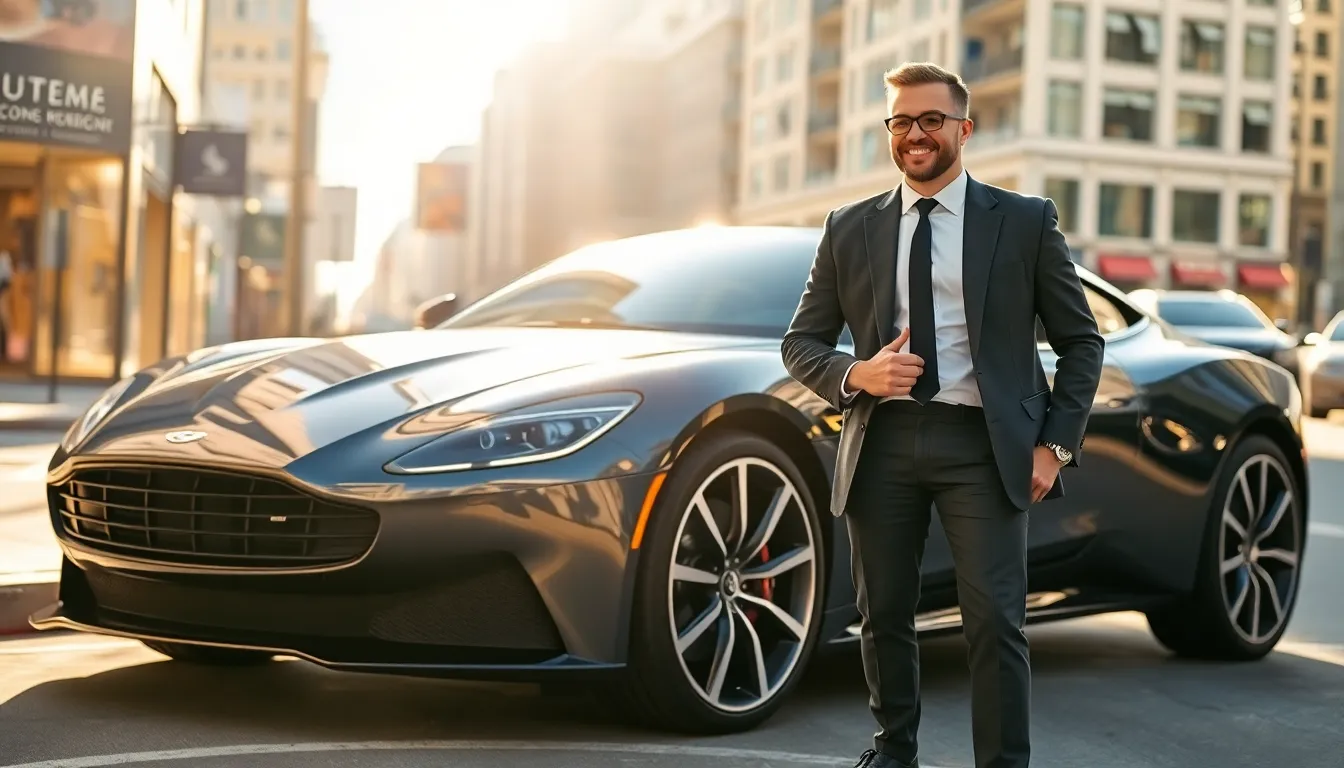We’ve all felt that rush when a sleek Lamborghini roars past us on the highway or when we catch a glimpse of a pristine Rolls-Royce gliding through city streets. There’s something undeniably magnetic about fancy cars that captures our imagination and makes us dream of the ultimate driving experience.
Luxury vehicles represent more than just transportation – they’re rolling masterpieces that combine cutting-edge technology with breathtaking design. From the hand-stitched leather interiors of a Bentley to the lightning-fast acceleration of a McLaren, these automotive marvels showcase what’s possible when engineering meets artistry.
Whether you’re curious about the latest supercar releases, dreaming of your first luxury purchase, or simply fascinated by automotive excellence, we’re here to guide you through the captivating industry of high-end automobiles. Let’s explore what makes these extraordinary machines so special and why they continue to set our hearts racing.
Most Expensive Luxury Sports Cars That Define Automotive Excellence
We explore the pinnacle of automotive engineering where price tags reach astronomical heights. These extraordinary machines represent the absolute best in performance technology and craftsmanship.
Bugatti Chiron and Its Record-Breaking Performance
Bugatti Chiron stands as the ultimate expression of automotive power with its quad-turbocharged W16 engine producing 1,479 horsepower. We’re talking about a machine that accelerates from 0 to 60 mph in just 2.4 seconds. This French hypercar reaches a top speed of 261 mph, making it one of the fastest production cars ever built. Starting at $3.3 million, the Chiron features active aerodynamics that automatically adjust based on speed and driving conditions. Each vehicle takes six months to hand-assemble at Bugatti’s Molsheim facility. The carbon fiber monocoque chassis provides exceptional rigidity while keeping weight to 4,398 pounds.
McLaren P1 and Its Hybrid Innovation
McLaren P1 pioneered the hybrid hypercar revolution by combining a twin-turbo V8 with an electric motor for 903 total horsepower. We’ve witnessed this British masterpiece complete the Nürburgring lap in under 7 minutes. Priced at $1.15 million during its production run from 2013 to 2015, only 375 units were ever made. The P1’s active suspension system can lower the car by 50mm in Race mode for maximum aerodynamic efficiency. Its lightweight carbon fiber construction helps achieve a power-to-weight ratio of 647 horsepower per ton. McLaren’s innovative DRS (Drag Reduction System) reduces drag by 23% when activated on straightaways.
Koenigsegg Jesko and Its Track-Focused Design
Koenigsegg Jesko delivers track-oriented performance through its 5.0-liter twin-turbo V8 engine that produces up to 1,600 horsepower on race fuel. We observe how this Swedish hypercar features the industry’s first 9-speed multi-clutch transmission designed specifically for lightweight operation. With a starting price of $3 million, the Jesko incorporates active aerodynamics that generate up to 3,000 pounds of downforce. The carbon fiber body weighs only 2,733 pounds, creating an incredible power-to-weight ratio. Koenigsegg developed the Triplex suspension system that uses three dampers per front wheel for superior track handling. The Jesko Track version can theoretically reach 330 mph under perfect conditions.
Classic Fancy Cars That Started the Luxury Revolution
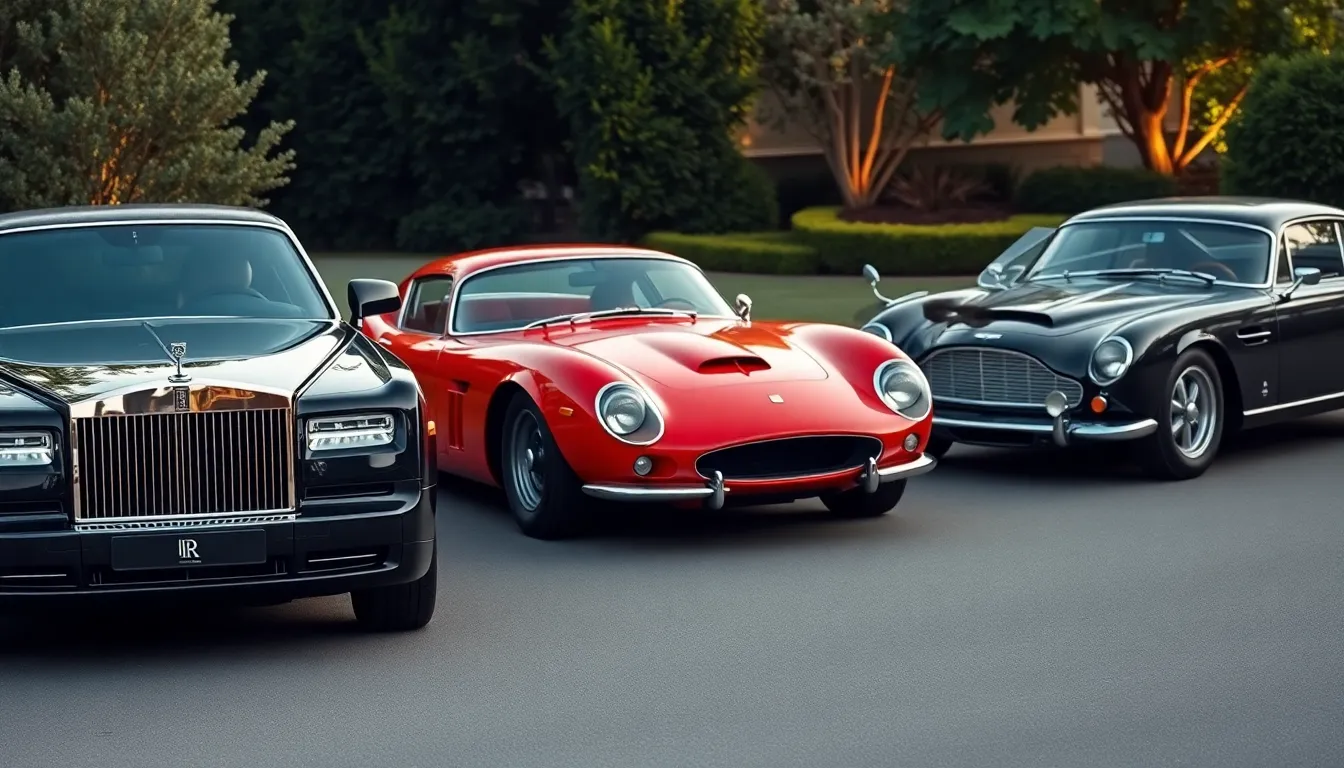
These legendary automobiles laid the foundation for today’s luxury automotive industry and continue to influence modern fancy car design.
Rolls-Royce Phantom and Its Timeless Elegance
Rolls-Royce Phantom established the gold standard for automotive luxury when it debuted in 1925, creating a blueprint that luxury manufacturers still follow today. We recognize this masterpiece for its hand-crafted interior appointments including lamb’s wool carpeting, bespoke wood veneering, and sterling silver accents that took craftsmen over 450 hours to complete per vehicle.
Engineering excellence defined every Phantom component from its whisper-quiet 7.7-liter V12 engine to its self-leveling air suspension system that delivered an unparalleled smooth ride. The vehicle’s iconic Spirit of Ecstasy hood ornament became synonymous with ultimate prestige, while its coach-built body construction allowed wealthy clients to customize every exterior detail.
Manufacturing precision reached unprecedented levels with each Phantom requiring 6 months to build using traditional coachbuilding techniques combined with modern engineering. We see its influence in today’s luxury vehicles through features like electronically controlled comfort systems, premium leather appointments, and attention to acoustic engineering that creates library-quiet cabins.
Ferrari 250 GTO and Its Racing Heritage
Ferrari 250 GTO revolutionized the sports car industry when Enzo Ferrari introduced it in 1962, combining race-bred performance with road-going luxury in ways no manufacturer had achieved before. This legendary machine featured a 3.0-liter V12 engine producing 300 horsepower, enabling acceleration from 0 to 60 mph in just 5.4 seconds during an era when most cars struggled to reach highway speeds.
Racing pedigree flowed through every design element as Ferrari built only 36 examples between 1962 and 1964, making it one of the most exclusive vehicles ever created. We observe how its aerodynamic bodywork influenced modern supercar design through features like integrated air intakes, sculpted fender lines, and a distinctive rear spoiler that provided downforce at racing speeds.
Collectible status reached astronomical heights when a 1962 Ferrari 250 GTO sold for $48.4 million at auction in 2018, establishing it as one of the most valuable cars in history. The vehicle’s combination of racing success, limited production numbers, and timeless Italian styling created a template for exclusive luxury sports cars that continues to drive collector demand today.
Aston Martin DB5 and Its James Bond Legacy
Aston Martin DB5 achieved global fame when it appeared in the 1964 James Bond film “Goldfinger,” transforming from a premium British grand tourer into a cultural icon that elevated the entire luxury car segment. We recognize how this vehicle’s association with sophistication and adventure helped establish the connection between fancy cars and aspirational lifestyle branding.
Mechanical sophistication impressed automotive enthusiasts through its 4.0-liter inline-six engine producing 282 horsepower, five-speed manual transmission, and independent rear suspension that delivered exceptional handling characteristics. The DB5’s aluminum body construction reduced weight while maintaining structural integrity, pioneering lightweight design principles that modern luxury manufacturers continue to embrace.
Cultural impact extended far beyond cinema as the DB5’s elegant proportions, distinctive grille design, and British craftsmanship influenced luxury car aesthetics for decades. We see its design DNA in contemporary Aston Martin models through signature elements like the side strakes, flowing roofline, and muscular rear haunches that create an unmistakable silhouette synonymous with refined performance.
Electric Fancy Cars Leading the Sustainable Future

Electric luxury vehicles are revolutionizing the automotive industry with their combination of zero emissions and uncompromising performance. We’re witnessing a transformation where sustainability meets sophistication in ways that exceed traditional combustion engines.
Tesla Model S Plaid and Its Cutting-Edge Technology
Tesla Model S Plaid redefines what we expect from electric luxury sedans with its tri-motor powertrain producing 1,020 horsepower. We see acceleration capabilities that rival supercars, launching from 0 to 60 mph in just 1.99 seconds while maintaining a refined interior experience.
Advanced autopilot features position the Model S Plaid at the forefront of autonomous driving technology. We find its 17-inch touchscreen interface controls nearly every vehicle function, from climate settings to entertainment systems. Over-the-air software updates continuously enhance performance and add new features without requiring dealership visits.
The vehicle’s 396-mile EPA-estimated range addresses long-distance travel concerns that often deter luxury car buyers from electric options. We appreciate how Tesla’s Supercharger network provides convenient charging infrastructure across major travel routes. Battery technology innovations allow the Model S Plaid to maintain consistent performance even during extended driving sessions.
Porsche Taycan and Its Performance Engineering
Porsche Taycan delivers the brand’s legendary driving dynamics through electric propulsion systems engineered for track performance. We experience precise handling characteristics that preserve Porsche’s sports car DNA while embracing sustainable powertrains.
Dual motor configurations generate up to 750 horsepower in Turbo S variants, propelling the Taycan from 0 to 60 mph in 2.6 seconds. We notice how the 800-volt electrical architecture enables rapid charging speeds, adding 60 miles of range in just 4 minutes at compatible stations. Air suspension systems adapt to driving conditions automatically, maintaining optimal ride quality across various terrains.
Interior craftsmanship reflects traditional Porsche attention to detail with premium leather appointments and curved display screens. We find the driver-focused cockpit design maintains familiar Porsche ergonomics while integrating modern electric vehicle technologies. Sound engineering creates an authentic sports car experience even though the silent electric motors.
Lucid Air Dream Edition and Its Range Capabilities
Lucid Air Dream Edition achieves the longest EPA-estimated range of any production electric vehicle at 516 miles per charge. We see how this extended capability eliminates range anxiety for luxury buyers accustomed to long-distance travel comfort.
Efficiency innovations allow the Air Dream Edition to travel over 4.5 miles per kWh, setting new industry benchmarks for energy consumption. We appreciate the spacious interior that rivals traditional luxury sedans, featuring Glass Canopy roof systems and executive rear seating configurations. Advanced driver assistance systems provide semi-autonomous capabilities comparable to other premium electric vehicles.
Manufacturing quality reflects the brand’s commitment to luxury standards, with hand-finished interior elements and precision assembly processes. We find the Air Dream Edition’s starting price of $169,000 positions it competitively against established luxury sedan offerings. Performance variants produce up to 1,111 horsepower, demonstrating that maximum range doesn’t require sacrificing acceleration capabilities.
Handcrafted Fancy Cars with Bespoke Customization Options
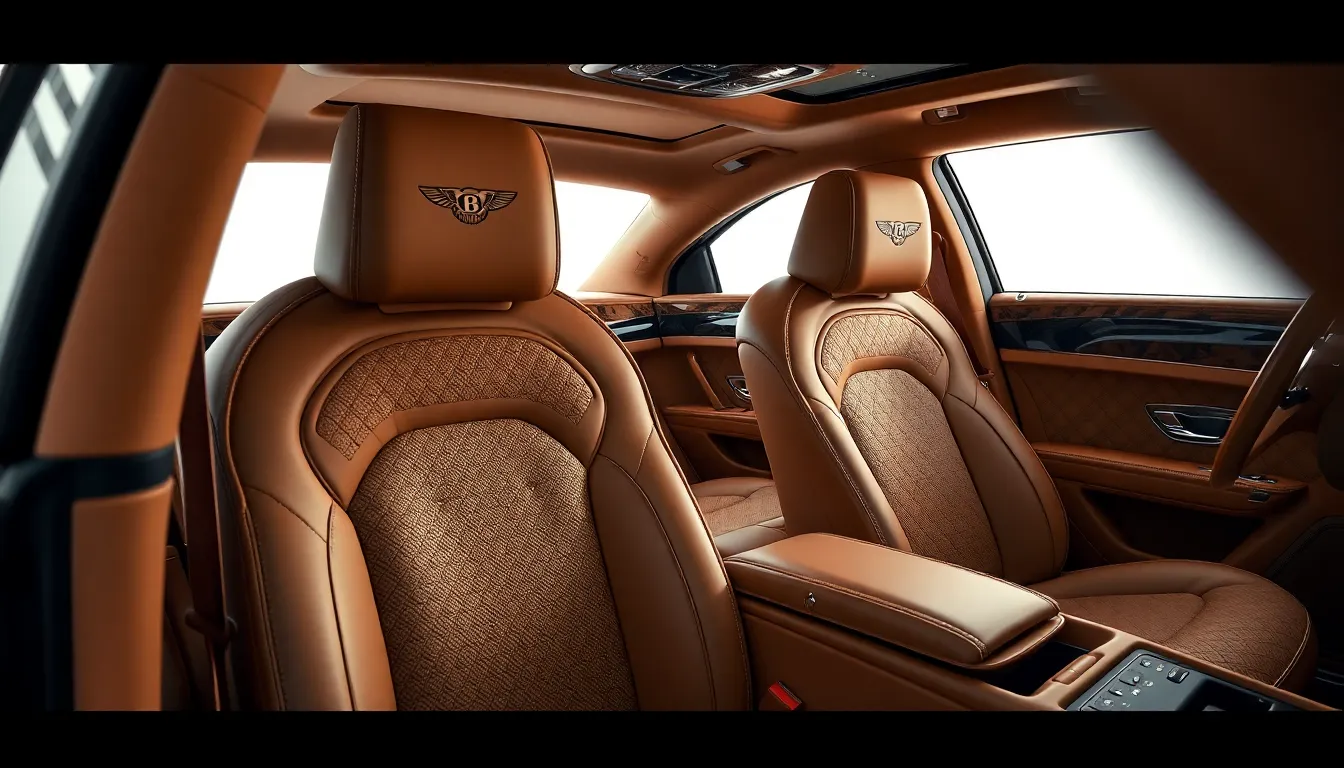
Beyond mass production lies a area where automotive artistry meets individual expression. These handcrafted luxury vehicles represent the ultimate fusion of traditional craftsmanship and personalized design.
Bentley Mulsanne and Its Artisanal Interior
Bentley’s flagship sedan transforms luxury through meticulous handcrafting that requires over 400 hours of labor per vehicle. Skilled artisans hand-stitch each leather surface using techniques passed down through generations of British craftsmanship. We find that the Mulsanne’s interior features hand-selected Connolly leather, polished wood veneers, and hand-knurled metal accents that create an unmatched sensory experience.
Master craftsmen spend weeks perfecting the diamond-quilted leather seats, while specialized technicians hand-polish the burr walnut or piano black veneers for over eight hours. Each customer can select from 17 standard leather colors or commission completely bespoke hues to match personal preferences. The attention to detail extends to hand-engraved treadplates and personalized embroidery options that make every Mulsanne truly unique.
Rolls-Royce Cullinan and Its Personalization Program
Rolls-Royce elevates bespoke customization through its exclusive commissioning program that transforms each Cullinan into a personal masterpiece. The company’s Goodwood atelier employs master craftspeople who can incorporate virtually any material or design element into the luxury SUV. We’ve seen examples where customers have requested meteorite inlays, hand-painted murals depicting family estates, and even picnic sets crafted from the finest crystal and sterling silver.
Their personalization team works directly with clients to create one-of-a-kind features like starlight headliners that mirror exact constellation patterns from meaningful dates. Custom paint formulations can match anything from a favorite flower to a cherished piece of jewelry, with some bespoke colors taking months to perfect. The result is a Cullinan that serves as both transportation and personal art piece, with no two vehicles ever being identical.
Pagani Huayra and Its Carbon Fiber Artistry
Pagani transforms carbon fiber from a performance material into sculptural art through their innovative manufacturing techniques developed in Modena, Italy. Each Huayra receives hand-laid carbon fiber bodywork that combines multiple weave patterns to create visual depth and structural integrity. We observe that Pagani’s artisans treat carbon fiber like fabric, creating flowing patterns that follow the car’s organic curves.
The company’s proprietary Carbo-Titanium material blends carbon fiber with titanium threads, resulting in strength that exceeds traditional composites while maintaining artistic beauty. Every panel undergoes hand-finishing that can take weeks to complete, with craftsmen carefully sanding and polishing each surface to achieve perfect smoothness. Custom paint applications over the carbon fiber create unique color-shifting effects that change appearance under different lighting conditions, making each Huayra a rolling work of automotive art.
Limited Edition Fancy Cars That Collectors Dream About
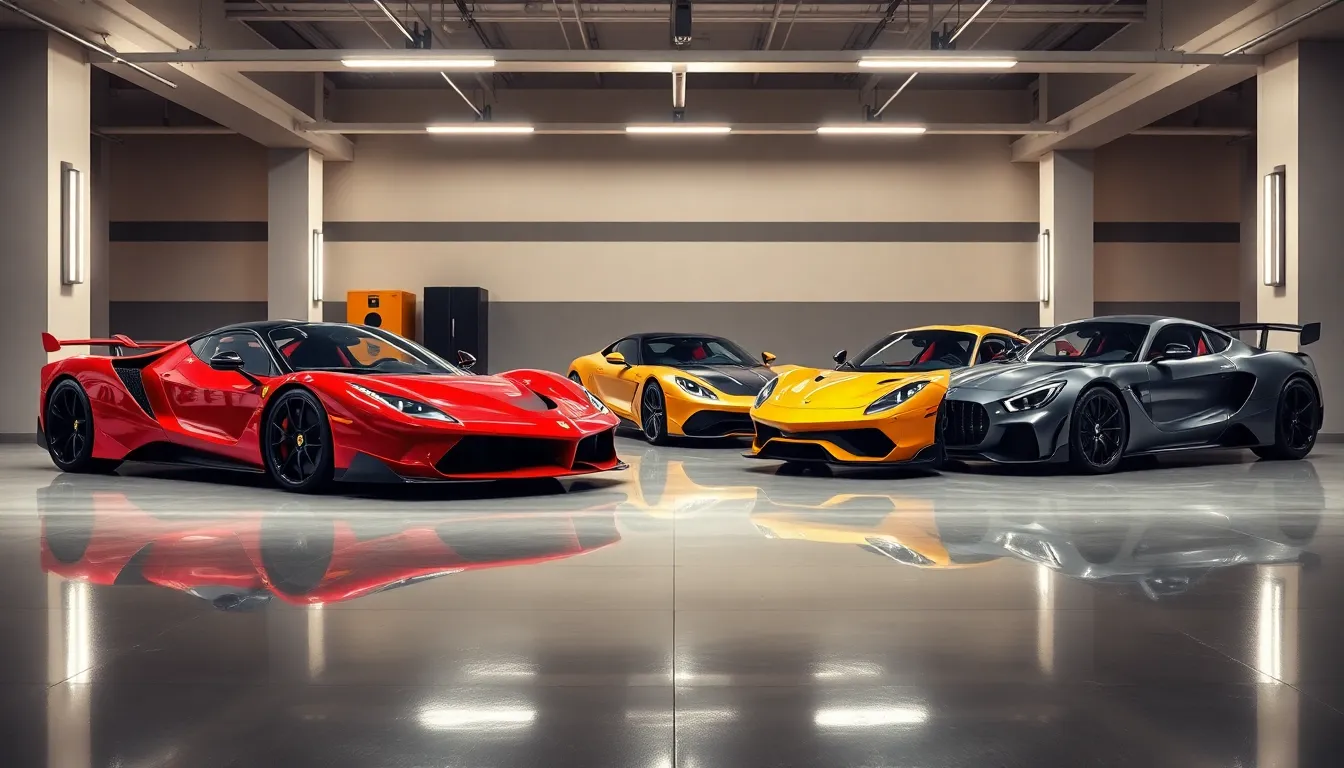
Limited production runs create automotive legends that capture the imagination of collectors worldwide. These exclusive machines represent the ultimate expression of engineering excellence and design artistry.
Ferrari LaFerrari and Its Exclusive Production Run
Ferrari LaFerrari stands as one of the most coveted hypercars ever produced, with only 499 units manufactured between 2013 and 2016. We’re talking about a revolutionary hybrid powertrain that combines a naturally aspirated 6.3-liter V12 engine with an electric motor, producing a staggering 949 horsepower total output.
Performance specifications showcase the LaFerrari’s exceptional capabilities:
| Specification | Value |
|---|---|
| Production Units | 499 vehicles |
| Horsepower | 949 hp |
| 0-60 mph | 2.4 seconds |
| Top Speed | 217 mph |
| Original Price | $1.4 million |
Collectors pay astronomical sums for these limited examples at auctions, with pristine models selling for over $5 million today. Ferrari’s hybrid technology in the LaFerrari pioneered many innovations we now see across their modern lineup, making it historically important beyond its rarity.
Lamborghini Centenario and Its Anniversary Tribute
Lamborghini Centenario celebrates the 100th anniversary of founder Ferruccio Lamborghini’s birth through an ultra-exclusive production of just 40 vehicles. Production split evenly between 20 coupes and 20 roadsters ensures maximum collector appeal while honoring the brand’s heritage.
Engineering prowess shines through the Centenario’s naturally aspirated 6.5-liter V12 engine that produces 759 horsepower. Aerodynamic enhancements include active rear wing technology and sophisticated carbon fiber bodywork that reduces weight while improving downforce by 15% compared to the Aventador platform.
Collector market dynamics reflect the Centenario’s exclusive status:
| Market Factor | Details |
|---|---|
| Original Price | $1.9 million |
| Current Values | $2.5-3 million |
| Production Period | 2016-2017 |
| Delivery Method | By invitation only |
Exclusive delivery required personal invitations from Lamborghini, ensuring only the most dedicated collectors could acquire these anniversary tributes.
Mercedes-AMG One and Its Formula 1 Technology
Mercedes AMG One brings Formula 1 technology directly from the racetrack to the road through an unprecedented engineering achievement. We’re witnessing the first production car to feature an actual F1 powertrain, with Lewis Hamilton and Valtteri Bottas serving as development drivers during the testing phase.
Hybrid powertrain complexity includes a turbocharged 1.6-liter V6 engine paired with four electric motors, producing a combined 1,063 horsepower. Formula 1 derived components like the turbocharger that spins at 100,000 RPM and the energy recovery systems create maintenance requirements similar to race cars.
Technical specifications highlight the F1 connection:
| Component | F1 Technology Applied |
|---|---|
| Engine RPM | 11,000 maximum |
| Electric Motors | 4 units total |
| Aerodynamics | Active elements |
| Weight | 3,737 pounds |
| Top Speed | 219 mph |
Production limitations restrict the AMG One to just 275 units worldwide, with each example requiring approximately 18 months to complete due to the complex assembly process. Mercedes validates each powertrain component using the same standards applied to their Formula 1 race engines, ensuring collectors receive genuine racing technology adapted for road use.
Emerging Fancy Car Brands Disrupting the Luxury Market
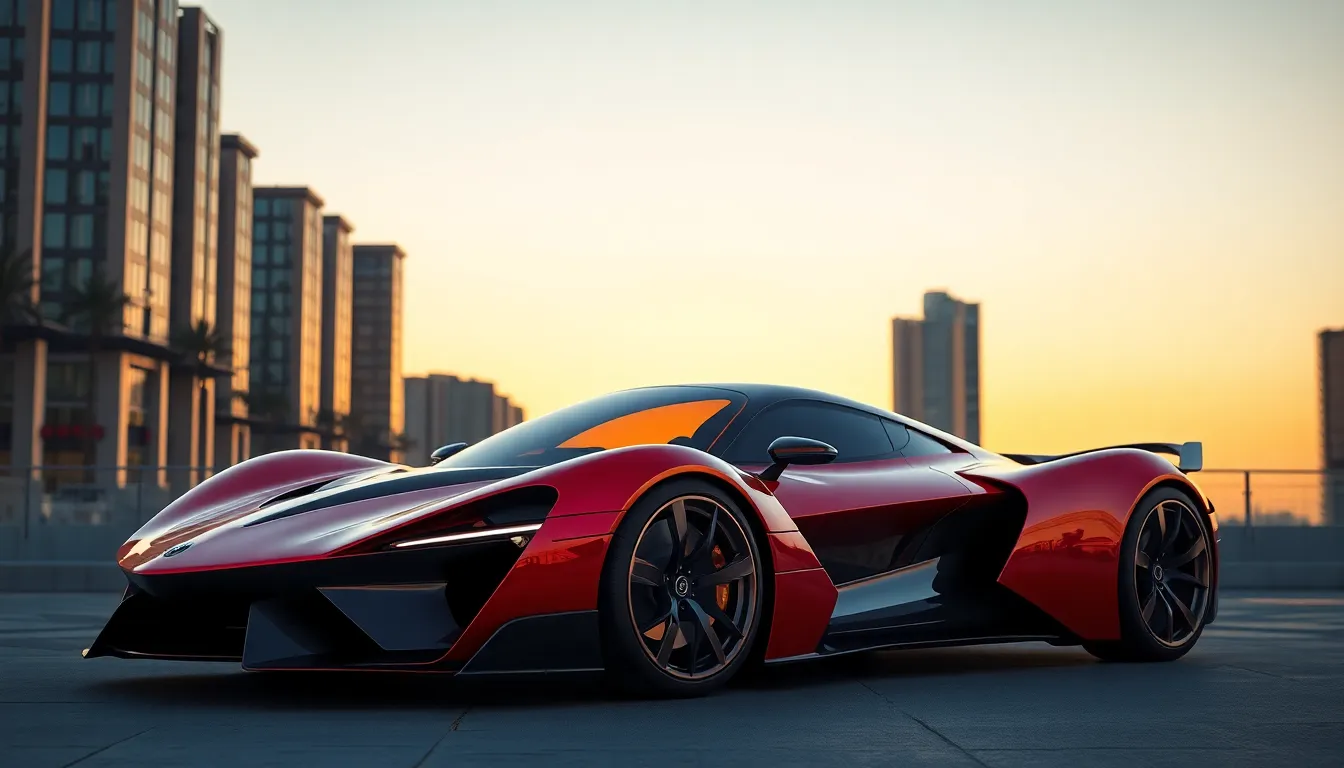
Revolutionary manufacturers are redefining automotive excellence through groundbreaking technologies and visionary design approaches. These emerging brands challenge established luxury giants by introducing innovations that weren’t possible just decades ago.
Rimac Nevera and Its Electric Hypercar Status
Rimac’s Nevera establishes unprecedented benchmarks in electric hypercar performance with its quad motor powertrain producing 1,914 horsepower and 1,740 lb-ft of torque. We’ve witnessed this Croatian marvel accelerate from 0 to 60 mph in just 1.85 seconds, making it the fastest production electric vehicle ever tested. Advanced carbon fiber construction keeps the weight at 4,740 pounds while housing a 120 kWh battery pack that delivers over 340 miles of range.
Engineering excellence defines every aspect of the Nevera’s sophisticated all wheel torque vectoring system, which can distribute power independently to each wheel within milliseconds. Performance capabilities extend beyond straight line acceleration, with the vehicle achieving a quarter mile time of 8.6 seconds and a top speed of 258 mph. Limited production of just 150 units ensures exclusivity while the $2.4 million price point positions it among the industry’s most expensive electric vehicles.
Pininfarina Battista and Its Italian Design DNA
Pininfarina’s Battista represents pure Italian automotive artistry through its collaboration with legendary design house heritage spanning over 90 years of automotive excellence. We recognize this electric hypercar as producing 1,900 horsepower through its four electric motors, delivering breathtaking acceleration from 0 to 62 mph in under 2 seconds. Craftsmanship traditions merge with cutting edge technology as each of the 150 planned vehicles undergoes hand assembly in Italy.
Aesthetic perfection flows through every sculptural curve while maintaining the aerodynamic efficiency required for its 217 mph top speed capability. Design elements pay homage to classic Pininfarina creations like the Ferrari 250 GT and Lancia Aurelia while incorporating modern carbon fiber bodywork and active aerodynamics. Customization options allow owners to personalize their $2.2 million investment through exclusive paint finishes, interior materials, and bespoke design elements that reflect individual preferences.
Czinger 21C and Its 3D-Printed Innovation
Czinger’s 21C pioneers automotive manufacturing through revolutionary 3D printing technologies that create complex metal components impossible to produce using traditional methods. We observe how this Los Angeles based manufacturer utilizes artificial intelligence to optimize part designs for maximum strength to weight ratios while reducing material waste by up to 75%. Advanced manufacturing processes enable the production of intricate chassis components and suspension parts that weigh significantly less than conventionally manufactured alternatives.
Performance specifications showcase the effectiveness of these innovative production methods through the vehicle’s 1,250 horsepower hybrid powertrain and sub 1,900 pound dry weight. Acceleration figures demonstrate 0 to 62 mph in 1.9 seconds while achieving a top speed exceeding 250 mph during testing phases. Production limitations of just 80 vehicles ensure exclusivity while the $1.7 million price reflects the advanced manufacturing technologies and bespoke nature of each hand assembled hypercar.
Investment Potential of Fancy Cars as Collectible Assets

Luxury vehicles have evolved beyond transportation to become sophisticated investment opportunities that can rival traditional asset classes. We’ve witnessed remarkable appreciation in collectible car values over the past decade, with certain models delivering returns that outpace stock market performance.
Market Trends in Luxury Automotive Appreciation
Classic Ferrari models lead the collectible car market with unprecedented appreciation rates averaging 185% over the last 10 years. The Ferrari 250 GTO has achieved legendary status among collectors, with auction prices reaching $70 million for pristine examples, making it one of the most valuable cars ever sold. Porsche 911 variants from the 1970s and 1980s have shown consistent growth, with early turbo models appreciating by 150% since 2015.
Limited production supercars demonstrate the strongest investment potential in today’s market. McLaren F1 values have surged to over $20 million for low mileage examples, representing a 400% increase from their original $815,000 MSRP. Lamborghini Miura models command between $1.2 million and $2.8 million depending on condition and provenance, showcasing steady appreciation across all price segments.
Electric luxury vehicles are creating new investment categories as early Tesla Roadsters gain collector interest. First generation Model S P100D variants with unique specifications are beginning to appreciate above their original retail prices, particularly limited edition configurations. Rimac and Pininfarina electric hypercars represent emerging opportunities for collectors seeking the next generation of appreciating assets.
Factors That Determine a Fancy Car’s Future Value
Production numbers create the foundation for long term appreciation potential in luxury automotive investments. Cars manufactured in quantities under 1,000 units typically demonstrate superior appreciation rates, with examples like the Pagani Zonda series maintaining strong auction performance across all variants. Ferrari’s limited production strategy continues to drive collector demand, as seen with LaFerrari values exceeding $5 million within five years of production.
Provenance and ownership history significantly impact collectible car valuations in auction markets worldwide. Vehicles with celebrity ownership, racing heritage, or important historical importance command premium prices that can exceed similar examples by 200% or more. Aston Martin DB5 models with James Bond film connections sell for substantially more than standard production examples, demonstrating the power of cultural significance.
Condition and authenticity determine the difference between profitable investments and costly restoration projects. Numbers matching components, original paint, and comprehensive service records create the most desirable collector vehicles that appreciate consistently. Restoration costs can easily exceed $500,000 for concours level work on high end classics, making original condition examples increasingly valuable.
Rarity through special editions, unique configurations, or factory modifications creates investment opportunities that outperform standard production models. Porsche 911 Sport Classic variants, Mercedes SLS AMG Black Series, and Aston Martin One 77 models demonstrate how manufacturer exclusivity translates into long term value appreciation for discerning collectors.
Conclusion
The industry of fancy cars continues to evolve at breakneck speed with each passing year. We’re witnessing an incredible transformation where traditional craftsmanship meets cutting-edge technology and sustainable innovation drives the future of luxury automotive design.
Whether you’re drawn to the raw power of hypercars the timeless elegance of handcrafted classics or the revolutionary potential of electric luxury vehicles there’s never been a more exciting time to explore this fascinating industry. These automotive masterpieces represent far more than transportation—they’re rolling sculptures that capture our imagination and push the boundaries of what’s possible.
The luxury car market offers something extraordinary for every enthusiast from collectors seeking rare gems to investors looking for the next big opportunity. As we move forward we can expect even more groundbreaking innovations that will redefine our relationship with these magnificent machines.
Frequently Asked Questions
What makes luxury sports cars so expensive?
Luxury sports cars command high prices due to their advanced engineering, exotic materials like carbon fiber, limited production numbers, and cutting-edge technology. Brands like Bugatti and Koenigsegg invest millions in research and development, use hand-crafted components, and employ aerospace-grade materials. The exclusivity factor, combined with exceptional performance capabilities and meticulous craftsmanship, justifies their astronomical price tags ranging from $1 million to over $3 million.
Are electric luxury cars as powerful as traditional supercars?
Yes, electric luxury cars often exceed traditional supercars in performance. The Tesla Model S Plaid produces 1,020 horsepower and accelerates 0-60 mph in 1.99 seconds, while the Rimac Nevera delivers 1,914 horsepower with 0-60 mph in just 1.85 seconds. Electric motors provide instant torque delivery, resulting in superior acceleration compared to internal combustion engines, while maintaining luxury amenities and advanced technology.
What are the most valuable classic luxury cars for investment?
The Ferrari 250 GTO leads classic car investments, with auction prices reaching $70 million. Other valuable classics include the McLaren F1, Lamborghini Miura, Rolls-Royce Phantom, and Aston Martin DB5. Classic Ferrari models have averaged 185% appreciation over the last decade. Factors affecting value include rarity, provenance, condition, production numbers, and historical significance. Limited production and celebrity ownership significantly boost valuations.
How much customization is available for handcrafted luxury cars?
Handcrafted luxury cars offer extensive bespoke customization options. Bentley Mulsanne interiors require over 400 hours of artisanal work with hand-stitched leather and polished wood. Rolls-Royce Cullinan provides meteorite inlays and custom paint formulations. Pagani Huayra transforms carbon fiber into sculptural art with custom finishes. These manufacturers allow clients to personalize virtually every aspect, from interior materials to unique exterior colors and bespoke features.
Which emerging luxury car brands should I watch?
Key emerging brands include Rimac with the Nevera hypercar (1,914 HP), Pininfarina with the Battista (1,900 HP), and Czinger with the innovative 21C featuring 3D printing technology. These brands are disrupting traditional luxury markets with groundbreaking electric powertrains, advanced materials, and visionary designs. They represent the future of luxury automotive excellence, combining cutting-edge technology with exclusivity and exceptional performance capabilities.
Do luxury cars hold their value as investments?
Luxury cars can be excellent investments when chosen carefully. Classic Ferrari models have appreciated 185% over the last decade, while limited production supercars like the Ferrari LaFerrari have exceeded $5 million at auction. Investment potential depends on rarity, production numbers, condition, provenance, and historical significance. However, luxury cars require proper storage, maintenance, and insurance, making them sophisticated investment opportunities rather than guaranteed returns.

